My friend and CSR & Sustainability Consultant Juan Villamayor, who writes a great blog, is also writing a dissertation on the quality of Sustainability Reporting. In return for the promise of loads of ice-cream the next time I am in Barcelona, I agreed to provide Juan with my thoughts in response to his question:
What makes a Sustainability Report good or bad?
After I had drafted my response, pretty much off the cuff, I thought I would share it, in case anyone else is writing a dissertation. More ice cream for me, right ? Here is more or less what I wrote:
What makes a Sustainability Report good?
Ultimately, the test of a good or bad Sustainability Report is in the value it adds to a business (and by implication, to the stakeholders of that business). This may be internal value (management processes, engagement etc.) or external value such as building trust and managing risk. Unfortunately, companies rarely measure the value they gain from Sustainability Reporting, though most confirm that they do gain value. I would love to see some research about the specific impact of reporting on companies.
Assuming the report adds value, what makes a report good or bad depends on who is interested in it. Most reports are written for a range of stakeholders and therefore try to cover a balanced set of issues. However, depending who you are, this may or may not be enough. If you are an environmental activist and cannot find clear, relevant environmental impact data, you will be disappointed. If you are in a local community which has been affected by the company's operations, and cannot find information relating to the company's local impacts in your area, you will be disappointed. If you are an employee and read about information which you did not previously know, you may become more engaged and proud, or you may feel disconnected to read in a report what you might have expected to hear through an internal communication process. If on the other hand, you are a professional reporter, and expect reports to reflect a discipline of transparency, measurement and provide data about the company's sustainability impacts, then you tend to look for (not in order of importance) :
The Company's Role in Society
One of the first things I look to a Sustainability Report to do is enlighten me as to how the company sees its role in society. Sustainability is not just about improving impacts and behaving ethically. It's about doing business in a different way which makes a social contribution. I like to see companies define that contribution before they get into the detail of how many tons of paper they have recycled. This provides context for the report.
Material Issues
A materiality matrix (see interactive example from BASF here) which identifies the specific most important issues that the company faces in sustainability performance which has been developed using input from external and internal stakeholders, is important. Specific companies are at specific risk and face specific opportunities, as well as having very specific impacts on people and planet. Materiality helps us understand what these are and react accordingly.
Outcomes
I look for the outcomes or impacts of the company's Sustainability activities, not just performance. So if a company has been investing in environmental technology, I look to see if environmental impacts have improved. If the company has been investing in the community, I look to see what community outcomes have been achieved. A simple "train timetable" of what we have done and how much we have spent is rarely satisfying.
Framework
Most companies today have adopted the GRI framework to compile their report and include a GRI Index. I find this very helpful for navigating the report and finding specific information that I require. With such a framework, it is easy to see what has been reported and what not, against a template of universally relevant key issues. Even if the GRI Framework is not used, another type of framework or structure may be fine, but the inclusion of a content index is most helpful.
Authentic Style and Tone
I look for a style and tone which is authentic and not obviously copy-written – one which explains technical terms and helps tell a story rather than just state the dry facts.
Clear Data
I look for data which is presented coherently and where the basis for calculations are clear, so that you know what's included and what's not. I was recently reading a report that provides a figure for Motor Collisions per 100 employees. There is no basis for the calculation. Does this mean all employees or only employees that have a company vehicle? Is it all collisions or only collisions caused rather than experienced? Data must be presented in a way we can understand, and it is interesting to see prior year data for more than one or two years, so that you can get a sense of continuity.
Targets, Progress and Future Plans
I look for SMART targets , and understanding of not only what progress has been made to achieve the targets so far, but also what plans are in place to continue to do so (see SCA's Report for a good example of this). Simply stating that the company will reduce carbon emissions by 20% by 2020 is not terribly convincing. What is convincing is the plan to achieve this.
Stakeholder Voices
I love to see people in the report – all businesses are about people – employees telling their stories, external perspectives and well-written real-life case studies all add to the credibility and easy-reading factor of the report. (Check out this fabulous report from Impahla Clothing)
How Sustainability is Managed
I believe there is importance in how sustainability is managed in an organization – whether there is a Board Committee, a dedicated Sustainability Leader and a corporate Steering Team of some sort. I always look in the report to see who is responsible for leading sustainability strategy and who is on the frontline of execution. A robust structure gives credibility and confidence that progress can be made and objectives can be achieved. (see page 48 of the Toyota Report for an example)
Accessibility
Easy navigation of all the report content – a hyperlinked downloadable PDF is my preference (see Cisco's example), as I can read it without an internet connection. Report-builder features for web-based reports are important (see Timberland's example). I hate flipbooks and other pyrotechnical web presentations, though opportunity to add comments, such as the SAP report , is a nice touch. A good report website is attractive and accessible to many. Either way, it must enable you to get to what you want fast. Not many people read a report from end to end in the order of the contents list.
And finally, I look for Linkage – the link between the company's sustainability performance and its business success. Most companies don't really know how to express this, and there is some expectation that Integrated Reporting might provide a route to expressing this meaningfully. Today, when I see it, it's a bonus, but my starting point premise is that I won't find it in Sustainability Reports, which is quite ironic really, when you think that many companies engage in sustainability in order to support sustainable positive business performance. (I like the way BT does this)
Finally, finally, I look for Assurance. Today, most companies do not use external assurance or verification and those Assurance statements I read are often partial or completely inadequate, so I tend to assume that I won't find a good Assurance statement which is the result of rigorous process and adds credibility to the report. Here again, when I find a great Assurance Statement, it's a bonus. (here is an example from Bureau Veritas, assuring the Nestle 2011 CSV Report)
Those are my shoot-from-the-hip things that work well for me in Sustainability Reports.
Then I thought about answering the question the other way around:
What makes a Sustainability Report bad?
What makes a Sustainability Report bad?
Here, aside from saying the opposite of all the above, I think most of us know the answer to this – marketing orientation without substance, highly selective "good news" coverage with no context or substantiating data, and difficult, stiff, narrative with a tick-box approach to performance.
Truth is, most reports are neither totally good nor totally bad. but who am I to judge? I can say what works for me, but every stakeholder will have her or his own view.
A Sustainability Report is, simply put, what stakeholders make it.
And this brings me to my final point:
What makes a Sustainability Report really, really good?
Feedback.
Yes.
Feedback.
A Sustainability Report which gets no feedback hasn't hit the radar. And that's bad.
Be a great stakeholder. Give a Sustainability Report your feedback.
elaine cohen, CSR consultant, winning Sustainability Reporter, HR Professional, Ice Cream Addict. Author of CSR for HR: A necessary partnership for advancing responsible business practices Contact me via www.twitter.com/elainecohen on Twitter or via my business website www.b-yond.biz/en (Beyond Business, an inspired CSR consulting and Sustainability Reporting firm)



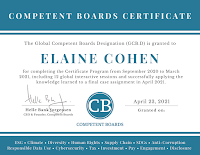


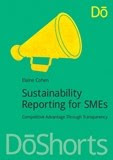
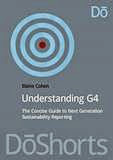
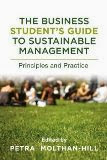
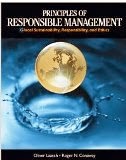
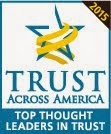









No comments:
Post a Comment